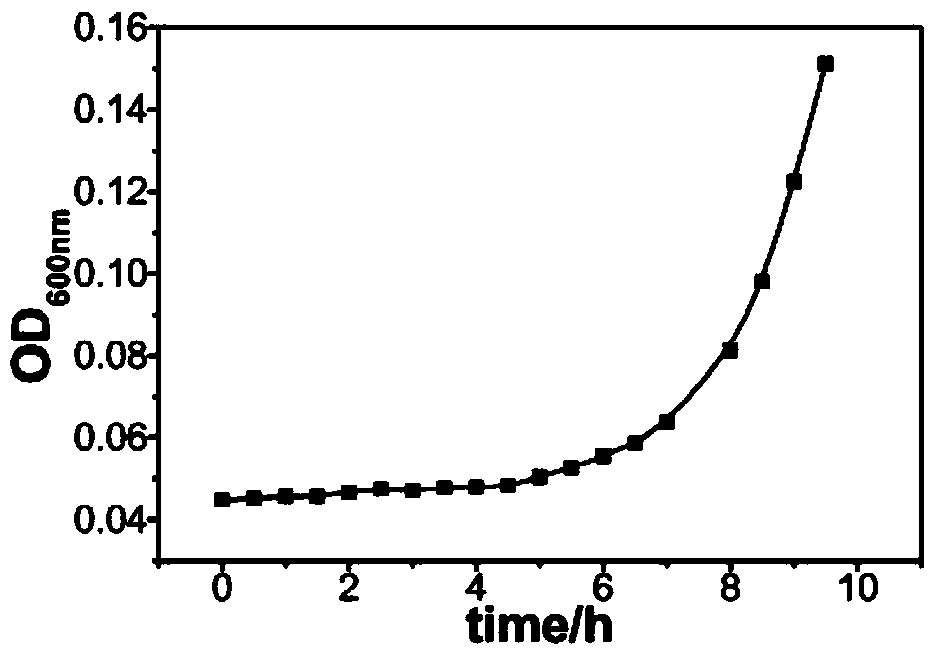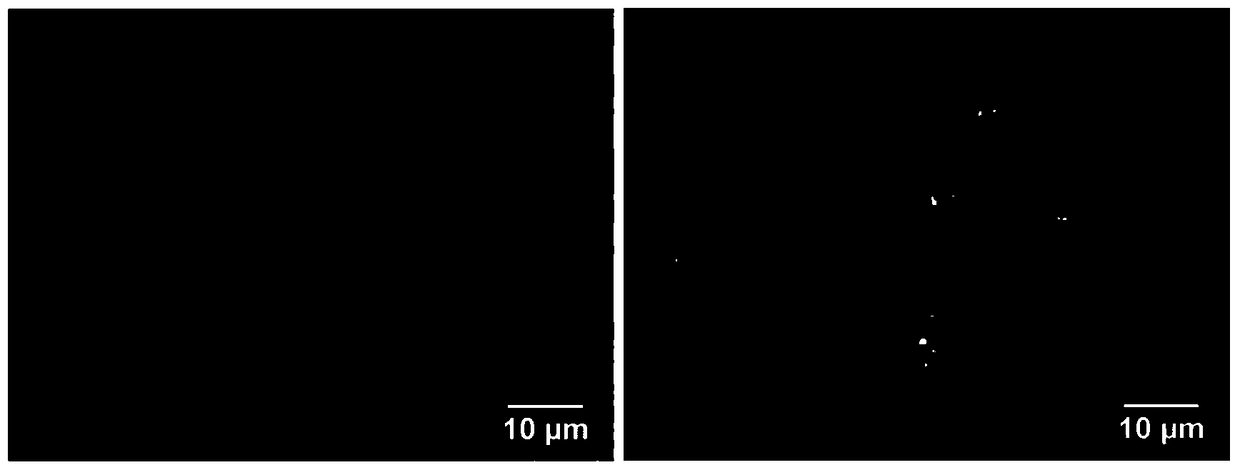Applications of conjugated polymer pfp-g2
A technology of polymers and microorganisms, applied in the field of chemistry, to achieve the effect of regular size
- Summary
- Abstract
- Description
- Claims
- Application Information
AI Technical Summary
Problems solved by technology
Method used
Image
Examples
Embodiment 1
[0049] Embodiment 1, growth and luminescence curve of Vibrio harveyi
[0050] (1), recovery culture of Vibrio harveyi
[0051] Using Vibrio harveyi BB170 as a template, use 75% alcohol absorbent cotton to sterilize the outer surface of the purchased ampule bottle containing Vibrio harveyi BB170 in an ultra-clean workbench, heat the top of it with a flame, and drop 300-400 μL of sterile Water to the top of the heated ampoule to rupture it. Draw 300-500 μL of suitable liquid culture medium (can be replaced by sterile water), drop it into the ampoule bottle, shake and blow lightly, so that the freeze-dried bacteria dissolve and form a suspension, absorb all the bacterial suspension, and transplant them into two 2216 cells respectively. In the solid medium of marine bacteria, culture at 30°C for 24 hours. Use an inoculation loop to scrape an appropriate amount of thalli to inoculate into the new 2216 marine bacteria solid medium, and continue to cultivate at 30°C, so that the co...
Embodiment 2
[0058] Example 2. Imaging experiment of Escherichia coli MG1655 and conjugated polymer PFP-G2
[0059] (1), recovery culture of Escherichia coli
[0060] Taking Escherichia coli MG1655 as an example, use 75% alcohol absorbent cotton to sterilize the outer surface of the purchased ampoule containing Escherichia coli MG1655 in the ultra-clean workbench, heat the top of it with a flame, and drop 300-400 μL of sterile water into the heated The tip of the ampoule was broken. Draw 300-500 μL of suitable liquid culture medium (can be replaced by sterile water), drop it into the ampoule, gently shake and blow it, so that the freeze-dried bacteria dissolve into a suspension, absorb all the bacterial suspension, and transplant it into two LB solids In the culture medium, culture at 37° C. at 180 rpm for 12 hours. Use an inoculation loop to scrape an appropriate amount of bacterium and inoculate it into a new LB solid medium, rotate at 180rpm at 37°C and continue to cultivate, so that ...
Embodiment 3
[0066] Example 3, the influence of the PFP-G2 polymer shown in formula I on the signal molecule shown in formula II in Escherichia coli MG1655
[0067] (1), recovery culture of Escherichia coli MG1655
[0068] With the step (1) of embodiment 2.
[0069] (two), the synthesis of PFP-G2 polymer shown in formula I
[0070] With the step (2) of embodiment 2.
[0071] (3), the compound PFP-G2 polymer shown in formula I is introduced in Escherichia coli MG1655
[0072] Pick an appropriate amount of Escherichia coli MG1655 from LB solid medium and place it in LB liquid medium, culture it with shaking at 180rpm at 37°C for 5-10h, adjust the OD with LB medium 600 The value is 1.0. Take a small amount of bacterial solution and dilute it 1000 times with LB medium, add PFP-G2 polymer shown in formula I with a final concentration of 100 μM, and control group does not add PFP-G2. Shake culture at 37°C at 180rpm for 1-8h, and the bacteria The solution was centrifuged at room temperature ...
PUM
 Login to View More
Login to View More Abstract
Description
Claims
Application Information
 Login to View More
Login to View More - R&D
- Intellectual Property
- Life Sciences
- Materials
- Tech Scout
- Unparalleled Data Quality
- Higher Quality Content
- 60% Fewer Hallucinations
Browse by: Latest US Patents, China's latest patents, Technical Efficacy Thesaurus, Application Domain, Technology Topic, Popular Technical Reports.
© 2025 PatSnap. All rights reserved.Legal|Privacy policy|Modern Slavery Act Transparency Statement|Sitemap|About US| Contact US: help@patsnap.com



